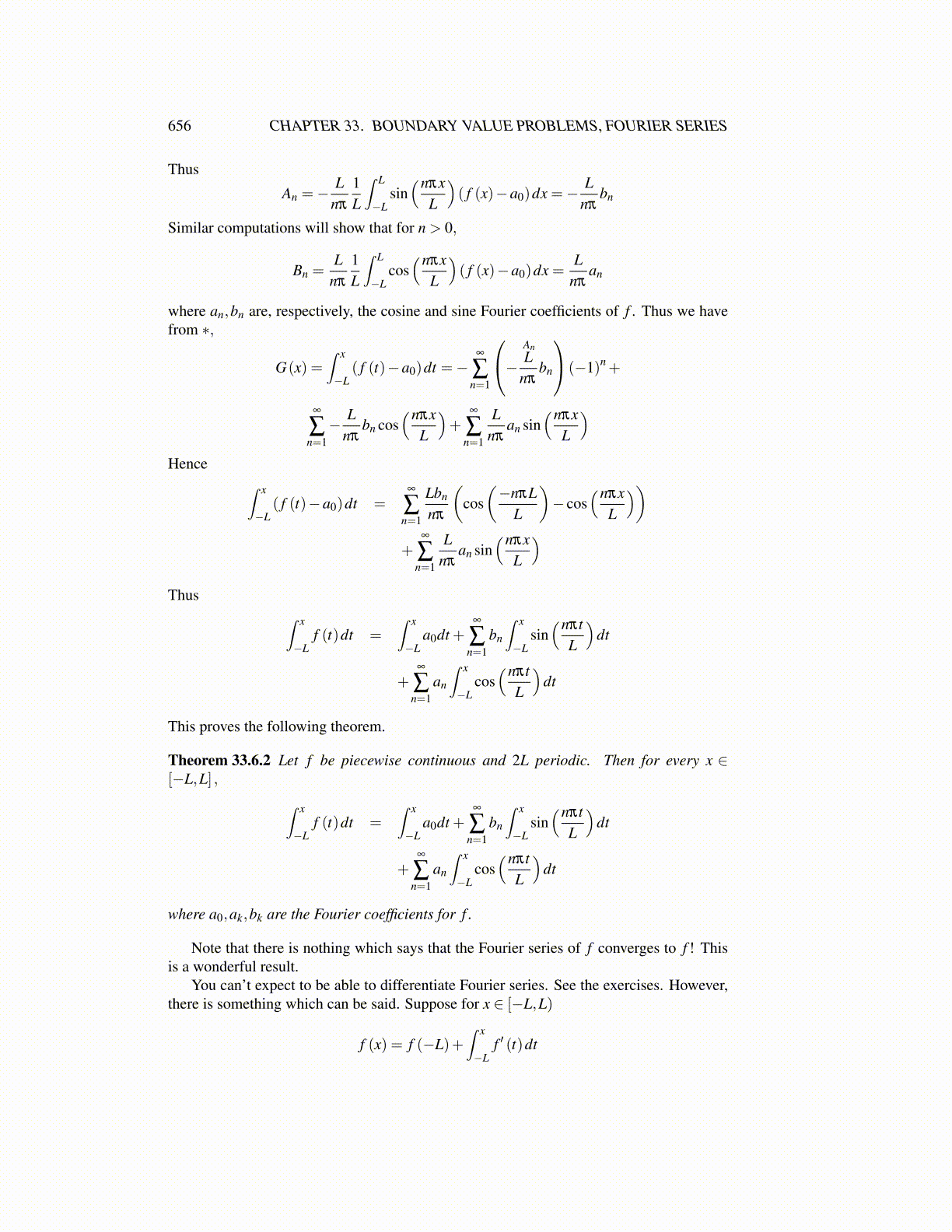
656 CHAPTER 33. BOUNDARY VALUE PROBLEMS, FOURIER SERIES
Thus
An =−L
nπ
1L
∫ L
−Lsin(nπx
L
)( f (x)−a0)dx =− L
nπbn
Similar computations will show that for n > 0,
Bn =L
nπ
1L
∫ L
−Lcos(nπx
L
)( f (x)−a0)dx =
Lnπ
an
where an,bn are, respectively, the cosine and sine Fourier coefficients of f . Thus we havefrom ∗,
G(x) =∫ x
−L( f (t)−a0)dt =−
∞
∑n=1
An
− Lnπ
bn
(−1)n+
∞
∑n=1− L
nπbn cos
(nπxL
)+
∞
∑n=1
Lnπ
an sin(nπx
L
)Hence ∫ x
−L( f (t)−a0)dt =
∞
∑n=1
Lbn
nπ
(cos(−nπL
L
)− cos
(nπxL
))+
∞
∑n=1
Lnπ
an sin(nπx
L
)Thus ∫ x
−Lf (t)dt =
∫ x
−La0dt +
∞
∑n=1
bn
∫ x
−Lsin(nπt
L
)dt
+∞
∑n=1
an
∫ x
−Lcos(nπt
L
)dt
This proves the following theorem.
Theorem 33.6.2 Let f be piecewise continuous and 2L periodic. Then for every x ∈[−L,L] , ∫ x
−Lf (t)dt =
∫ x
−La0dt +
∞
∑n=1
bn
∫ x
−Lsin(nπt
L
)dt
+∞
∑n=1
an
∫ x
−Lcos(nπt
L
)dt
where a0,ak,bk are the Fourier coefficients for f .
Note that there is nothing which says that the Fourier series of f converges to f ! Thisis a wonderful result.
You can’t expect to be able to differentiate Fourier series. See the exercises. However,there is something which can be said. Suppose for x ∈ [−L,L)
f (x) = f (−L)+∫ x
−Lf ′ (t)dt